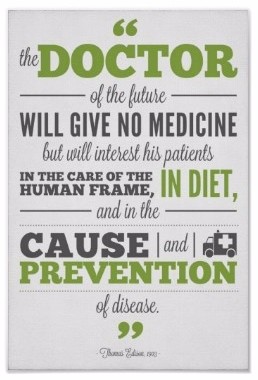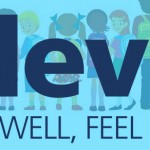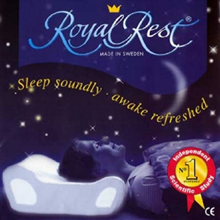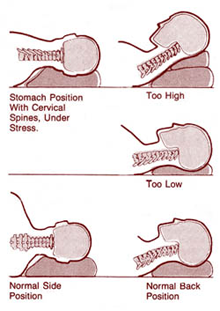Chiropractic Tips for Winter Wellness
It’s that time of year again …shoveling up fallen leaves, frosty mornings and the threat of snow (perhaps) is just around the corner!

Wrap up warm
When there is a chill in the air – always keep yourself wrapped up warm. Particularly your neck and around your waist! Wear a scarf to protect your neck from any draughts, make sure your jacket protects and covers your lower back and tuck in your vest!
Dry your crown
Did you know that you lose most of your heat from your head? Did you also know that when your hair is wet this accelerates heat loss – remember when your grandmother told you if you go out with your hair wet you’d catch a chill – well, it’s definitely more likely, so always dry your hair!
Don’t tread on thin ice
Watch your step!
> Walk slowly and shuffle with your feet close to the ground, arms extended to your sides if you need extra balance.
> Wear insulated, anti-slip footwear with rubber tread.
> Stick to well-lit, well-maintained pathways and if you must walk in the street, be sure you are visible to cars.
> Always be able to see where you are walking. If you are carrying packages, you might miss a slippery patch of ice if you can’t see directly in front of you.
> If you do take a tumble, try to relax and fall on your side.
Shovel with care
Watch your posture when shoveling and invest in a good quality and ergonomic shovel – An over sized, ridged grip handle will give you a more comfortable and secure hold. Try not to stay hunched over when shoveling, straighten up your back and reduce that stress on your spine.
Stay fit and active
As tempting as it is to ease off the exercise regimen …now is definitely not the time to back off. Keep active, keep supple and remember that at the very least – exercise is great for warming you up and getting the circulation going again. You will also benefit from the feel good hormones at this gloomy time of year.
Take Home Message
Keep moving, keep warm, keep dry and keep upright!

Natural Flu Treatment & Prevention
According to the Centers for Disease Control and Prevention (CDC), the flu bug is constantly changing…
5 Surprising Winter Health Tips
5 simple suggestions anyone can do easily and inexpensively to stave off the winter blues and sniffles…
8 Reasons why Chiropractic is the Best Treatment for Auto Injuries
Millions of people are injured in car crashes each year in the US, and many of these “minor” collisions result in long-term symptoms and disability…
A Disc Bulge Does Not Always Correlate to Pain
Diagnosed with a herniated disc? This often causes an individual to believe that their back or neck pain is attributed to a disc bulge..
Jaspreet Successfully Completes Cycle Africa!
Jas wishes a heartfelt ‘Thank you’ to all those who have supported her, pledged and donated to these great causes.


NEXT TIME: ‘Staying on top of your Health this Party Season’
5 Tips to Avoid ‘Funny Bones’!
A joint is the connection between two bones. Joints and their surrounding structures allow you to bend your elbows and knees, wiggle your hips, bend your back and turn your head.
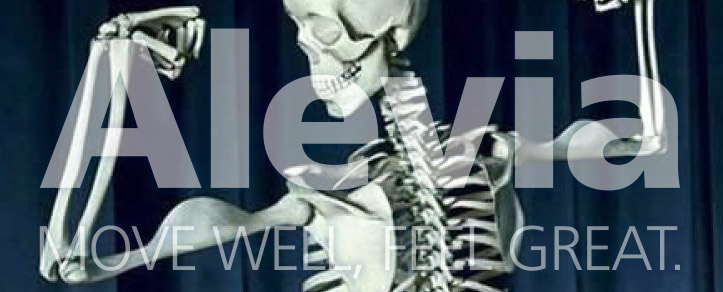
Joints
Smooth tissue called cartilage and synovium and a lubricant called synovial fluid cushion the joints so bones do not rub together. But increasing age, injury — even sitting the wrong way or carrying too much weight — can wear and tear your cartilage. This can lead to a reaction that can damage your joints and lead to arthritis.
1. Watch your Posture
We have previously discussed the fact that gravity is a one directional force which acts down upon us. If you are careful to maintain a good posture in balance with gravitational forces you will avoid excess pressure and load on your joints.
2. Eat Well
A balanced and healthy diet will always be the key to maintaining the trillions of cells that help our body to function and repair. This is also true of our joints, make sure you get your omega-3’s in by adding oily fish to your diet. Glucosamine supplementation has also been shown to help with joint health!
3. Watch Your Weight
Once again, gravity is the force in question …and if you add extra mass to that force then something has to support it and stop it ‘gravitating’ towards to ground! Yes, you got it …your skeletal system. Keep your weight within healthy levels and your joints will be able to cope with the load. If you are above your healthy weight, you are simply overloading your joints.
This if true for body builders too …gravity does not distinguish between types of mass, be it fat or muscle. Of course, you will be stronger if your weight is from muscles but training does not increase the durability of your joints, in fact it probably adds more load!
4. Stttrrreeetttccchhh!
Stretching isn’t just for workouts anymore. Take breaks throughout the day, including at the office, to get re-energised and help keep your muscles and ligaments flexible and strong.
5. Get your feet checked
Foot problems and a history of foot and ankle injury does not make for a stable foundation for the rest of your joints to ‘balance’ upon. Make sure your feet are correctly aligned so that they move well to support your moving frame. Some individuals have structural differences or weakness, in this case it is possible that orthotics are necessary for support.
At Alevia we offer a FREE biomechanics consultation, with a Doctor of Chiropractic, to look at the feet, gait and posture. BOOK A FREE CHECK
Take Home Message
We cannot fight gravity! …Remain in balance with it and keep yourself healthy to help preserve your joint health.

Chiropractic Care Beneficial For Dizziness and Balance Issues
Chiropractic is a superior treatment for dizziness and balance problems in older patients, as it doesn’t involve the risks involved with medications or surgery…
Arthritis Research UK
Food and supplements that might help with arthritis and joint health…
Short Walks Can Reverse Effects of Sitting
Many of us have jobs that require us to sit at a desk all day, and we’ve all seen the scientific studies that show how dangerous that is for our health…
Why Does Running Make Us Happy?
The joy of running. That sense of well-being, freedom and extra energy that runners often experience is not just a matter of endorphins…
Support Jas on her Cycle Africa!
(THIS MONTH!! October 2015)
Donate now on Jaspreet’s Just Giving Page OR sign donation form on reception – Thank you

NEXT TIME: ‘Tips for Winter Wellness’
The Young Spines are going ‘Back To School’!
School should be a place of playing, learning and growing. So what things can we do to help our children get the most out of school and be at their healthiest best!?

Eye Test
Children are adaptive creatures and are not always aware if their sight is as it should be. If your little one is starting school for the first time then they will have only needed to recognise objects and pictures by their shape and colour …not yet by specific letters and numbers. Otherwise it is recommended that children and adolescents have an eye test annually.
Correct Shoes
Children run around at school as well as sit in the classroom. Obviously they have a PE kit, but they do not change into these for break and lunchtime play!
Correctly fitted shoes will support the correct position and structural formation of their foot. If your child wears orthotics or gait plates to help support and train their foot arch then school shoes specifically designed for naturally high arches usually fit the best.
If you are worried about your child’s feet or want their arches checked by one of our Chiropractors, we offer a FREE biomechanics consultation to look at the feet, gait and posture. BOOK A FREE CHECK
Back Pack
This is the posture tip everyone knows, but try as we might, unfortunately it seems to be either more convenient to carry a back pack on one shoulder or it is just cooler?!
The trick is to train them young …teach them to tighten and loosen the straps for taking the bag on and off and soon it will become second nature, just as putting on your seat belt in the correct way is for us.
If bad habits are already in place, remind them that at the very least, the bag should not be bouncing in their bottom whilst walking!
Breakfast
The correct amount and type of energy is needed to fuel all this playing and learning …try to cut out the sugary cereals and have wholesome breakfasts. For example, scrambled eggs on toast, porridge oats & boiled eggs and soldiers. The more wholegrain and protein rich food groups they have at this time of day the better. And of course a glass of water or milk as opposed to orange juice.
Packed Lunch
The same principles apply for their lunch as for breakfast. Thankfully, children in reception and year 1 & 2 have hot meals provided for them in most schools. But for those that have or prefer packed lunches, fill them with some good energy filled snacks and healthy sandwiches. Try to make the bread wholegrain, choose a ham / egg / homous filling as opposed to just jam. Add a piece of fruit and some homemade flapjacks usually go down a treat. If your child insists on the packet of crisps (practically zero nutritional value) then ask them to have a banana or piece of fruit as well.
I know children can be difficult to please and of course we want them to eat well …but also be assured that they are eating something …we owe it to them to guide them to make the right food choices which will set them up for a healthier adulthood. If it cannot start now during their childhood years …then when? 🙂
Sleep Well
Adequate sleep is needed to process information, recover and rest. Therefore, enough sleep is most important at this crucial time in a child’s development. Children usually need between at least 9 to 12 hours every night.
Take Home Message
Try to adapt some of these healthy habits into your own daily routine. Make time to sit with your children to eat a healthy breakfast and take time to pack a lunchbox together the evening before – that way, you can talk to them about the food choices in their lunches.
REMEMBER: Children will be children, but there is always hope as they learn by example…we are that example.

Sugar: Can we Trust Industry?
The reason why the sweet stuff is the new frontier in the campaign to get people to live healthier lives…
Chiropractic Adjustments Produce Immediate Results Visible on MRI
New research helps to explain why chiropractic is so effective for low-back pain…
Salt: No Great Shakes for your Health
We have known for some time that too much is bad for us, but now researchers are linking increased salt consumption to the rise in autoimmune disease…
Support Jas on her Cycle Africa!
(NEXT MONTH!! October 2015) Donate now on Jaspreet’s Just Giving Page OR sign donation form on reception – Thank you


Lee Haney, American Athlete
NEXT TIME: Top 5 Tips to Avoid ‘Funny Bones!’
Sun Exposure: Good or Bad?
We’ve all heard the horrors of what too much sun exposure can do to our skin …The wrinkles, the freckles, the sunspots, sunburn and three types of skin cancer!
But on the other hand, there is good & bad in not getting enough vitamin D.
…Oh wait, it also turns out getting sunshine may have an anti-cancer effect. Confused? You are not the only one!
So, how much is too much?
Usually anything over about 15 minutes. A more accurate way to gauge how much sun you should get is to look at your skin. If the sun caused your skin to TURN PINK, then you definitely got too much! Over exposure and damage caused by UV rays in sunlight cause skin cancer. More people die of skin cancer each year in the UK than in Australia, and rates of skin cancer are increasing faster than any other cancer.
Sometimes, we wear sunscreen and are totally mystified by the fact that we still turned pink, or worse, got sunburn. How does this happen? It’s most likely because we used the wrong sunscreen, didn’t apply it correctly, or both.
Why do I need Vitamin D and will I get it if I wear sunscreen?
Vitamin D helps the metabolism of calcium in the body, so it is essential for healthy bones and teeth. New research has also discovered that vitamin D is essential for a whole range of metabolic processes and protects against many forms of cancer, as well as reducing the risk of Multiple Sclerosis and diabetes.
US scientists reporting in the American Journal of Epidemiology found that pale-skinned women with high levels of sun exposure halved their risk of developing advanced breast cancer compared to those with low sun exposure.
If you wear the correct sun protection then you will not get vitamin D from the suns rays. It is likely you will recently have heard of children developing vitamin D deficiency diseases (e.g. rickets). This is because they are kept inside, out of the sunshine or are lathered up with sunscreen at every opportunity by well meaning parents.
I have Sunscreen left over from last year…
This is a common scenario and many of us have sunscreen left over from summers past. In an attempt to be frugal, we keep using that same old bottle until it’s gone….just like we do with make-up! In both cases, however, it’s healthiest to throw away old sunscreen and old make-up, even though it hurts to waste.
So get yourself a brand new bottle of sunscreen. Paying close attention to the label & look for a “BROAD SPECTRUM” sunscreen, with a sun protection factor (SPF) of 30 or higher for protection from ultraviolet A (UVA) and ultraviolet B (UVB) rays. Also read the label for length of effectiveness.
So how much sun do I need and doesn’t the sun age your skin?
You don’t need to stay in the sun for long to build up vitamin D stores in the body. For most of us, 10 minutes a day during the summer months wearing normal clothes – exposing just a bit of leg and arm is enough.
Some people are concerned about the aging effects sun has on the skin…with good reason. That’s why when you get your sun, just get it on parts OTHER than your face. Sunscreen on the face is always a good idea.
However, as we get older our skin becomes less efficient at making vitamin D, so government guidelines recommend that everyone over the age of 65 take a 10mcg vitamin D supplement every day.
Supplements are also recommended for pregnant and breastfeeding women.
Take Home Message
“Dietary vitamin D supplements alone will not be able to compensate for lack of sunlight”,
Dr Richard Weller, Edinburgh University.
…there are also very few foods which naturally contain vitamin D and it is almost impossible to get all the vitamin D that you need from your diet.
No one should underestimate the danger of too much sun exposure and you should be checking your body for changes in the appearance of existing moles and any new skin lesions. If in doubt, get it checked out!
It is possible to get the best of both worlds ….enjoy the sun safely: use sunscreens and appropriate clothing; and avoid being out in the sun when it is at its highest (11am-3pm).
REMEMBER: The amount of sun needed to make enough vitamin D is always less than the high amounts that cause tanning or sunburn.

Vitamin D and Spinal Health
New research suggests there may be a link between the body’s vitamin D levels and spinal health…
Sun Exposure and Vitamin D Sufficiency
Full article on the controversy of sun exposure…
Exposure to Sun Poses Risk of Skin Cancer even in the Dark
Moving immediately into the shade does not stop sun damage as UV rays can continue damaging skin cells hours after exposure…
Quarter of Sun Exposed Skin Samples had DNA Mutations
“More than a quarter of a middle-aged person’s skin may have already made the first steps towards cancer.”…
Jas is going to Cycle Africa!
(This coming October 2015) Please support Jas in this amazing challenge for 3 fabulous causes. Donate now on Jaspreet’s Just Giving Page OR sign donation form on reception – Thank you

NEXT TIME: The Young Spines are Going Back to School!


